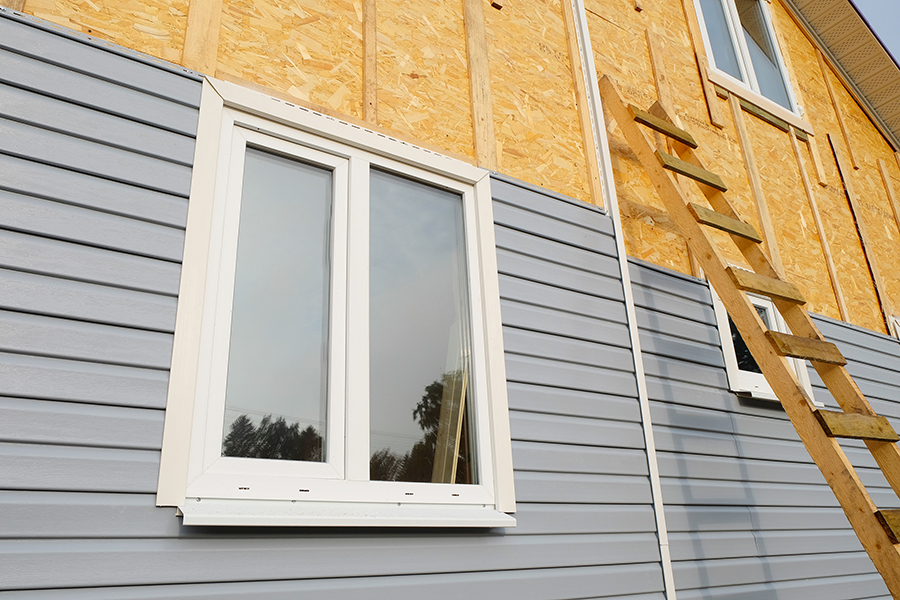Unveiling the Relevance of Picking the Right Exterior Sidings for Long-Term Sturdiness
When it concerns the structural honesty and visual charm of a building, the choice of exterior siding plays a critical function. The sturdiness of siding materials can dramatically influence the durability and general upkeep costs of a residential or commercial property. However, the sheer range of exterior siding alternatives available on the market can make the decision-making procedure intimidating. Comprehending the critical aspects that affect the resilience of outside house sidings is essential for making notified options that can stand the examination of time. By untangling the complexities surrounding this choice, a clearer path towards durable and lasting siding services emerges.
Variables Affecting Siding Toughness
Checking out the setup process is important in identifying the elements influencing exterior siding sturdiness. Proper installation plays a substantial duty in making sure the longevity and performance of outside home sidings. Elements such as making use of quality products, proficient labor, and adherence to maker guidelines throughout setup are important for taking full advantage of the resilience of sidings.
The kind of material used for sidings is a key element affecting their toughness. Materials like plastic, fiber cement, timber, and steel have various levels of durability and call for particular upkeep practices. In addition, exposure to ecological elements such as sunlight, wetness, and extreme temperatures can influence the durability of house sidings.
Moreover, the high quality of setup straight affects the toughness of sidings. Improper setup can cause concerns like bending, cracking, or water infiltration, jeopardizing the architectural honesty of the house sidings. Hiring seasoned experts and complying with right installment treatments are critical steps in ensuring the sturdiness of exterior home sidings.
Effect of Climate Condition
Exposure to various weather components such as rain, snow, hail storm, UV rays, and changing temperatures can impact the toughness of sidings over time. Consistent direct exposure to dampness from rain or snow can lead to water seepage, causing mold, mold and mildew, or rot growth in exterior sidings made of products like wood or fiber cement.
Selecting the appropriate house siding material that can hold up against the particular climate conditions of an area is critical for lasting resilience. Understanding the impact of climate conditions on outside house sidings is crucial in making notified choices to make certain the long life and efficiency of the exterior siding financial investment.
Power Efficiency Considerations
Provided the substantial function weather problems play in identifying the sturdiness of exterior sidings, it is imperative to likewise think about the energy effectiveness implications when selecting the most suitable home siding material for a home. Choosing for energy-efficient siding materials can add to preserving a comfortable indoor temperature throughout the year while possibly reducing energy bills. When determining on exterior home sidings, considering their energy efficiency can lead to long-lasting cost savings and an extra environmentally conscious selection for the residential property.
Upkeep Demands and Costs

Vinyl house siding typically has lower maintenance costs compared to wood or fiber cement home siding, as it does not call for constant paint or discoloration. It is crucial to factor in long-lasting upkeep costs when initially picking a siding product to guarantee that the total life time costs line up with your budget plan.
Durability and Return on Financial Investment
Recognizing the long life of different exterior siding products is critical for residential or commercial property owners looking to maximize their roi. Picking an exterior siding material with a lengthy lifespan can substantially affect the overall cost-effectiveness of a home. Vinyl house siding, as an example, is recognized for its durability and low upkeep requirements, which can add to long-lasting financial savings for home owners. Fiber cement siding is one more option acknowledged for its longevity, with some producers supplying warranties of as much as 50 years. While preliminary installation costs may range house siding materials, choosing a sturdy option can lead to minimized repair work and replacement expenditures in time.
In terms of return on financial investment, house siding materials that offer long life can boost the worth of a home. By considering the durability of outside home siding contractors near me siding materials, residential or commercial property proprietors can make enlightened choices that profit them in the lengthy run.
Conclusion

The toughness of siding materials can substantially affect the long life and overall upkeep expenses of a property. Comprehending the effect of weather condition problems on outside home sidings is necessary in making notified choices to make certain the durability and performance of the home siding investment.
Provided the considerable duty climate problems play in figuring out the sturdiness of exterior home sidings, it is crucial to likewise consider the power effectiveness ramifications when picking the most suitable exterior siding material for a home. Plastic home siding normally has lower maintenance costs contrasted to timber or fiber concrete home siding, as it does not need regular painting or staining. By meticulously considering these variables and picking the best product, residential property proprietors can make the most of the sturdiness and return on financial investment of their outside house siding.